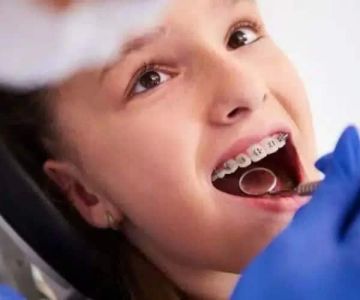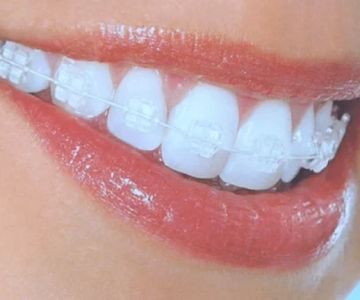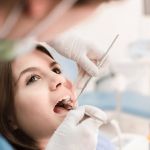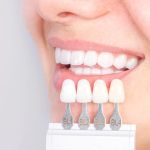The Basics of Jaw Misalignment
The human jaw is a complex structure that plays a vital role in speaking, chewing, and maintaining facial aesthetics.
Understanding jaw misalignment is crucial as it affects millions worldwide, with substantial cases also observed in the United States.
Defining jaw misalignment involves looking into how the upper and lower teeth meet. Proper alignment means that when you close your mouth, your upper teeth slightly overlap the lower ones.
This basic alignment is necessary not only for appearance but also for the efficient functioning of teeth and jaw.
Recent studies have highlighted that a significant portion of the US population suffers from varying degrees of jaw misalignment, often leading to orthodontic issues.
These misalignments can range from mild to severe and can result in an array of health issues if not addressed timely.
Causes of Jaw Misalignment
Understanding what causes jaw misalignment starts with recognizing the multifaceted nature of dental and skeletal development.
Genetics play a significant role, as children can inherit jaw structures from their parents.
Environmental factors, such as prolonged thumb sucking in children or mouth breathing, can lead to malocclusion.
Traumatic injuries to the face and jaw can also result in misalignment.
Furthermore, poor dental care and the loss of teeth without replacement can alter jaw alignment over time.
Each of these causes requires a tailored approach to treatment, emphasizing the need for individualized diagnosis and care.
Consequences of Left Untreated
Ignoring jaw misalignment can result in several serious health implications, both oral and systemic.
One of the primary concerns is temporomandibular joint disorder (TMD), characterized by jaw pain and headaches.
Misaligned jaws can also lead to difficulty in chewing and speaking, impacting nutritional intake and social interaction.
Further, the strain on teeth from incorrect bite alignment can cause uneven wear and lead to premature tooth decay.
Over time, this can lead to the necessity for extensive dental work and corrective procedures.
Addressing these issues timely can prevent more severe complications and improve overall quality of life.
Orthodontic Solutions
Treating jaw misalignment often involves a combination of orthodontic solutions designed specifically for the severity of each case.
Traditional braces and clear aligners are commonly used to correct alignment issues gradually.
For more severe cases, orthodontists might recommend the use of appliances that guide jaw growth and development.
Surgical options are also available but are typically reserved for adult patients or those with significant structural abnormalities.
Each treatment plan is custom-tailored to provide the best possible outcome for the patient.
Continuation of care after treatment is crucial to maintaining alignment and optimal dental health.
Innovative Technologies in Orthodontics
Recent advancements in orthodontic technology have opened new pathways for treating jaw misalignment more effectively.
Digital imaging and 3D modeling offer precise diagnostics and treatment planning.
Innovative devices such as Invisalign have gained popularity for being less intrusive and more aesthetically pleasing.
These technologies increase patient comfort and often reduce treatment times.
The Dentistry Toothtruth website provides resources and the latest information on such technological advancements.
Staying informed about these options can empower patients to make educated decisions about their orthodontic treatments.
The Role of General Dental Health Practices
Maintaining proper dental hygiene is critical in preventing jaw misalignment and other orthodontic issues.
Regular checkups with dental professionals help identify early signs of misalignment.
A balanced diet that supports bone and dental health, including vitamins D and calcium, can prevent developmental issues.
Establishing these practices early on, especially in children, can set the foundation for lifelong oral health.
Dentistry Toothtruth emphasizes the importance of proactive dental care as it is fundamental to preventing orthodontic problems.
Educating oneself about the effects of lifestyle choices on dental health can pay dividends in avoiding complex orthodontic issues later in life.
Conclusion: Taking Action Today for a Healthier Tomorrow
Addressing jaw misalignment is crucial for overall dental and systemic health.
This issue, prevalent across the United States, requires awareness and proactive management.
From understanding its causes to exploring the latest in orthodontic treatments, individuals have numerous options to pursue better oral health.
Taking the necessary steps early on can prevent long-term discomfort and dental complications.
For those experiencing symptoms of misalignment or interested in learning more, visiting Dentistry Toothtruth can provide valuable insights and resources.
Consult with a dental professional today to evaluate your alignment and explore available treatments for a healthier, more confident smile.




 T. R. Smiles Dental
T. R. Smiles Dental Elmwood Family Dental
Elmwood Family Dental Aspen Dental - Springfield, MO
Aspen Dental - Springfield, MO West Dundee Dental
West Dundee Dental Holistic Dental Wellness Center - Iman Abdeshahian, DMD
Holistic Dental Wellness Center - Iman Abdeshahian, DMD Alameda Crossing Dental Group and Orthodontics
Alameda Crossing Dental Group and Orthodontics The Importance of Oral Health Education During Pregnancy for a Healthy Pregnancy
The Importance of Oral Health Education During Pregnancy for a Healthy Pregnancy Why Skipping Dental Checkups Can Lead to Bigger Oral Health Problems
Why Skipping Dental Checkups Can Lead to Bigger Oral Health Problems Advantages of Porcelain Dental Restorations
Advantages of Porcelain Dental Restorations Best Tips for Brushing Your Teeth Properly for Healthy Gums: Essential Techniques for Oral Health
Best Tips for Brushing Your Teeth Properly for Healthy Gums: Essential Techniques for Oral Health How Can Diabetes Cause Tooth and Gum Problems? Preventing and Managing Oral Health Issues
How Can Diabetes Cause Tooth and Gum Problems? Preventing and Managing Oral Health Issues Healthy Habits for Promoting Good Oral Health and Hygiene: Tips for a Healthy Smile
Healthy Habits for Promoting Good Oral Health and Hygiene: Tips for a Healthy Smile